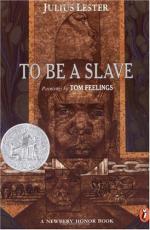
|
| Name: _________________________ | Period: ___________________ |
This test consists of 15 multiple choice questions and 5 short answer questions.
Multiple Choice Questions
1. Why did the attempt to use this second group of people also fail for the English colonists?
(a) They felt that because they too were white, that they deserved equal treatment and refused to work.
(b) They were susceptible to several diseases in the New World and many died quickly.
(c) The seven year turnover meant a continued supply of new people and they could easily run away and blend in with other whites people.
(d) They were lazy and did not do their required work well.
2. What was the area on the slave trading boat called where the Africans were held and chained together?
(a) Slave dungeon.
(b) Slave holding.
(c) Slave galley.
(d) Slave dinghy.
3. Many of the white men and black slave children had what sort of unique bond, though not always acknowledged?
(a) Father and son/daughter.
(b) Master and servant.
(c) Father and slave.
(d) Master and slave.
4. Who said the following: "You want to know what they did in slavery times. They were doing just what they do know."?
(a) Alice Johnson.
(b) Roberta Manson.
(c) Sallie Crane.
(d) Anonymous.
5. What was one principal item for which slaves were traded for?
(a) Yams.
(b) Liquor.
(c) Furniture.
(d) Weapons.
6. What was the typical work hours for a slave who worked in the field?
(a) Sunrise to nighttime.
(b) Sunrise to sunset.
(c) Mid-morning to midnight.
(d) Sunrise to midnight.
7. What was a second principal item for which slaves were traded for?
(a) Yards of cotton.
(b) Horses.
(c) Several pounds of corn.
(d) Domesticated dogs.
8. How much time did the slaves typically get for a break?
(a) 1 hour.
(b) 10 - 15 minutes.
(c) 15 - 20 minutes.
(d) 20 - 30 minutes.
9. Which country introduced Africans to Europe in the early sixteenth century?
(a) Netherlands.
(b) England.
(c) Spain.
(d) Portugal.
10. Who describes being thrown in a buck and whipped?
(a) Henry Johnson.
(b) Ida Hutchinson.
(c) Ella Wilson.
(d) West Turner.
11. Mammy referred to her slave days as what?
(a) The "hell days."
(b) The "weary days."
(c) The "misery days."
(d) The "scornful days."
12. What event set off a large amount of slave selling?
(a) The death of many slaves due to the unconditionally hot weather in the summer.
(b) The election of Abraham Lincoln as President.
(c) The nomination of Abraham Lincoln as President.
(d) The death of many slave owners due to the plague.
13. What was the second group of people that the colonists tried to use for manual labor?
(a) Poor whites, prisoners, and debtors.
(b) Africans.
(c) Indians.
(d) Rich whites.
14. Which of the following were not one of the people who would administer a whipping to a slave?
(a) The overseer.
(b) The slave owner's child.
(c) The slave owner.
(d) The slave owner's wife.
15. What is one way early slave trades were carried out?
(a) The slave traders would lie in wait for the Africans then capture them.
(b) Slave traders would drug Africans and steal them.
(c) Slave traders asked the Africans to visit their ship then captured them.
(d) Slave traders tranquilized Africans, then captured them.
Short Answer Questions
1. Who told the account of a man named Gabe?
2. What was the name of the white man who taught his black son to call him "Papa" instead of "Master?"
3. In southern society, a man's status was based upon:
4. During which months were the slave coffles usually seen?
5. What is true about slaves and their living on plantations?
|
This section contains 634 words (approx. 3 pages at 300 words per page) |

|




